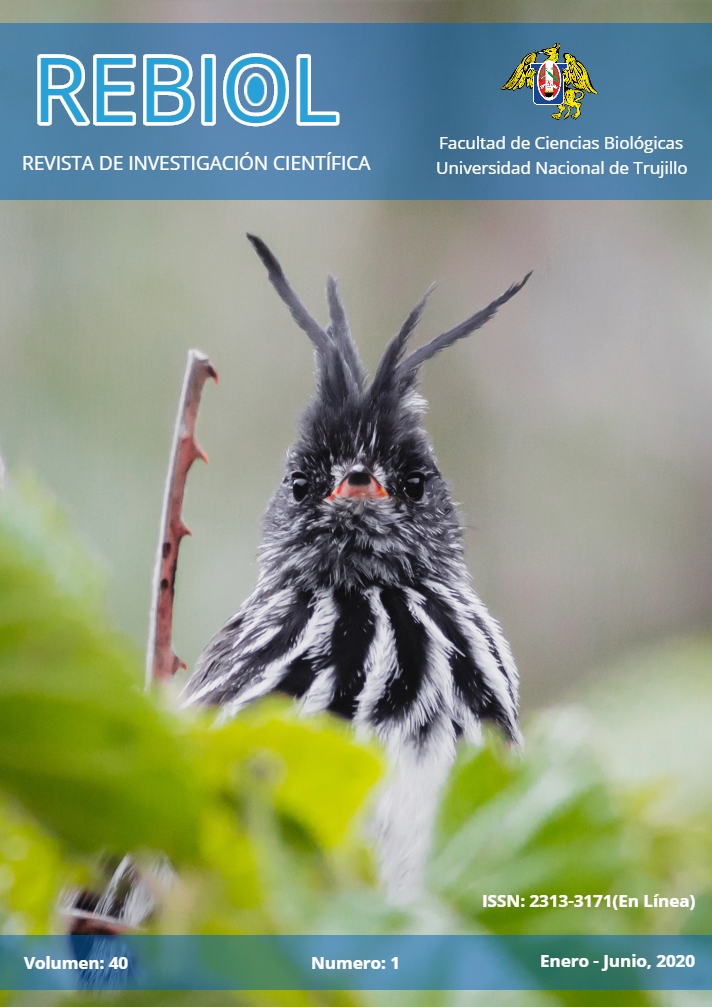COVID19 – Breve revisión del SARS-CoV-2
Resumen
En diciembre del 2019, una enfermedad respiratoria denominada COVID19 apareció en la ciudad de Wuhan, China, y se expandió a nivel global. Dicha enfermedad es causada por el coronavirus SARS-CoV-2, y constituye la mayor amenaza a la salud pública dentro de las ultimas décadas. Actualmente, es vital estudiar dicha enfermedad a nivel multidisciplinario para encontrar tratamientos efectivos, así como para comprender su desarrollo e impacto dentro de la historia humana. Este artículo de revisión se centra en recapitular la información que se conoce hasta la fecha sobre este virus, su origen, características y las estrategias que diversos gobiernos han adoptado en los últimos meses.
Palabras claves: COVID19, coronavirus, SARS-CoV, SARS-CoV2.
ABSTRACT
In December 2019, a respiratory disease named COVID19 emerged in the city of Wuhan, China, and it spread around the globe. This disease is caused by the SARS-CoV-2 coronavirus and it constitutes the major threat to public health in the last decades. Currently, it is vital to study this disease at a multidisciplinary level in order to find effective treatments, and to understand its development and impact in human history. This review focus on collecting the so-far-known information about this virus, its origin, characteristics and the strategies adopted by several governments in the last months.
Keywords: COVID19, coronavirus, SARS-CoV, SARS-CoV2.
Mensaje clave
La información brindaba en este artículo de revisión está fundamentada en una investigación bibliográfica rápida a partir de artículos citados en Pubmed, así como datos accesibles en NCBI y prensa internacional. Debido al avance rápido de los estudios sobre SARS-CoV-2, gran parte de la información mundial es actualizada diariamente, por lo cual este artículo puede contener información susceptible al cambio en las siguientes semanas.
Citas
Castagnoli, Riccardo, Martina Votto, Amelia Licari, Ilaria Brambilla, Raffaele Bruno, Stefano Perlini, Francesca Rovida, Fausto Baldanti, and Gian Luigi Marseglia. “Severe Acute Respiratory Syndrome Coronavirus 2 (SARS-CoV-2) Infection in Children and Adolescents: A Systematic Review.” JAMA Pediatrics, April 22, 2020.
https://doi.org/10.1001/jamapediatrics.2020.1467.
Callaway, E. (2020). The race for coronavirus vaccines: a graphical guide. Nature, 580(7805), 576-577. https://doi.org/10.1038/d41586-020-01221-y
Cohen, Jon. “Mice, Hamsters, Ferrets, Monkeys. Which Lab Animals Can Help Defeat the New Coronavirus?” Science | AAAS, April 13, 2020 https://doi:10.1126/science.abc2335
Cyranoski, David. “Profile of a Killer: The Complex Biology Powering the Coronavirus Pandemic.” Nature 581, no. 7806 (May 4, 2020): 22–26. https://doi.org/10.1038/d41586-020-01315-7.
Cyranoski, David. “Mystery Deepens over Animal Source of Coronavirus.” Nature 579, no. 7797 (February 26, 2020): 18–19. https://doi.org/10.1038/d41586-020-00548-w.
Forster, Peter, Lucy Forster, Colin Renfrew, and Michael Forster. “Phylogenetic Network Analysis of SARS-CoV-2 Genomes.” Proceedings of the National Academy of Sciences 117, no. 17 (April 28, 2020): 9241–43.
https://doi.org/10.1073/pnas.2004999117.
Gibney, Elizabeth. “Whose Coronavirus Strategy Worked Best? Scientists Hunt Most Effective Policies.” Nature 581, no. 7806 (April 27, 2020): 15–16. https://doi.org/10.1038/d41586-020-01248-1.
Guan, Wei-jie, Zheng-yi Ni, Yu Hu, Wen-hua Liang, Chun-quan Ou, Jian-xing He, Lei Liu, et al. “Clinical Characteristics of Coronavirus Disease 2019 in China.” New England Journal of Medicine, February 28, 2020. https://doi.org/10.1056/NEJMoa2002032.
Kim, Dongwan, Joo-Yeon Lee, Jeong-Sun Yang, Jun Won Kim, V. Narry Kim, and Hyeshik Chang. “The Architecture of SARS-CoV-2 Transcriptome.” BioRxiv, March 15, 2020, 2020.03.12.988865. https://doi.org/10.1101/2020.03.12.988865.
Ledford, Heidi. “How Does COVID-19 Kill? Uncertainty Is Hampering Doctors’ Ability to Choose Treatments.” Nature 580, no. 7803 (April 9, 2020): 311–12. https://doi.org/10.1038/d41586-020-01056-7.
Ledford, Heidi. “Coronavirus Shuts down Trials of Drugs for Multiple Other Diseases.” Nature 580, no. 7801 (2020): 15–16. https://doi.org/10.1038/d41586-020-00889-6.
Liu, Ping, Wu Chen, and Jin-Ping Chen. “Viral Metagenomics Revealed Sendai Virus and Coronavirus Infection of Malayan Pangolins (Manis Javanica).” Viruses 11, no. 11 (November 2019): 979. https://doi.org/10.3390/v11110979.
Lu, Roujian, Xiang Zhao, Juan Li, Peihua Niu, Bo Yang, Honglong Wu, Wenling Wang, et al. “Genomic Characterisation and Epidemiology of 2019 Novel Coronavirus: Implications for Virus Origins and Receptor Binding.” Lancet (London, England) 395, no. 10224 (2020): 565–74. https://doi.org/10.1016/S0140-6736(20)30251-8.
Mallapaty, Smriti. “Why Does the Coronavirus Spread so Easily between People?” Nature 579, no. 7798 (2020): 183. https://doi.org/10.1038/d41586-020-00660-x.
Maxmen, Amy. “How Blood from Coronavirus Survivors Might Save Lives.” Nature 580, no. 7801 (March 24, 2020): 16–17. https://doi.org/10.1038/d41586-020-00895-8.
Seto WH. Airborne transmission and precautions: facts and myths. J Hosp Infect. 2015; 89(4):225-8. doi: 10.1016/j.jhin.2014.11.005. PMID: 25578684
Zhang, Tao, Qunfu Wu, and Zhigang Zhang. “Probable Pangolin Origin of SARS-CoV-2 Associated with the COVID-19 Outbreak.” Current Biology: CB 30, no. 7 (06 2020): 1346-1351.e2. https://doi.org/10.1016/j.cub.2020.03.022.
World Health Organization. Coronavirus disease (COVID-19) outbreak. htt://www.who.int
Worldometers: COVID-19 pandemic. https://www.worldometers.info/coronavirus/#countries
Publicado
Cómo citar
Número
Sección
Licencia
Derechos de autor 2020 Anthony Leon

Esta obra está bajo una licencia internacional Creative Commons Atribución-NoComercial-CompartirIgual 4.0.
Política propuesta para revistas que ofrecen acceso abierto
- Los autores/as conservarán sus derechos de autor y garantizarán a la revista el derecho de primera publicación de su obra, el cual estará simultáneamente sujeto a la «Licencia de reconocimiento» de Creative Commons que permite a terceros compartir la obra siempre que se indique su autor y su primera publicación en esta revista.
- Los autores podrán adoptar otros acuerdos de licencia no exclusiva de distribución de la versión de la obra publicada (por ejemplo, depositarla en un repositorio institucional o publicarla en un libro) siempre que se indique la publicación inicial en esta revista.
- Los autores tienen el derecho a hacer una posterior publicación de su trabajo, de utilizar el artículo o cualquier parte de aquel (por ejemplo: una compilación de sus trabajos, notas para conferencias, tesis, o para un libro), siempre que indiquen su publicación inicial en la revista REBIOL (autores del trabajo, revista, volumen, número y fecha).







